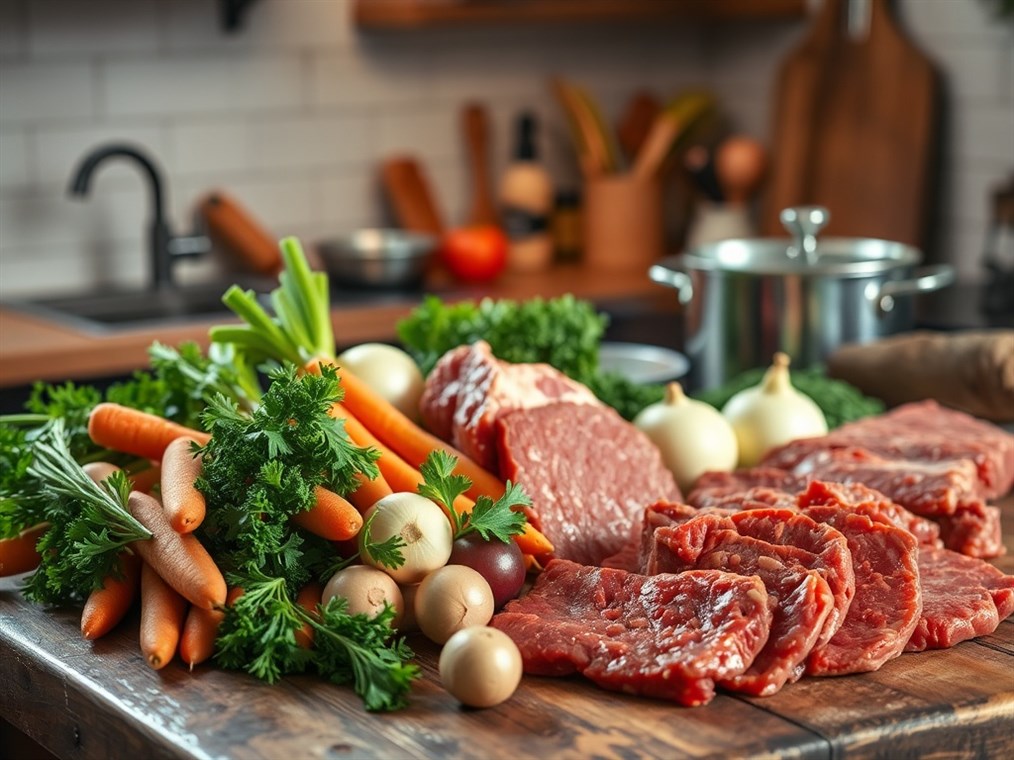The Secret Weapon for Unforgettable Beef Stew: Choosing the Right Cut
Okay, let’s talk beef stew. We’re not just throwing any old meat in a pot here; we’re aiming for stew nirvana! The single most important decision you’ll make? The cut of beef. Seriously, ditch those pre-cut “stew meat” packages. Trust me on this. If you want a stew that’ll have everyone begging for seconds, you need to understand your beef.
See, it’s all about the collagen. Those tougher, less glamorous cuts? They’re actually the heroes of the stew pot. Think of it this way: the more a muscle works, the more collagen it has. And collagen is magic. Long, slow cooking transforms that tough stuff into gelatin, which is what gives your stew that rich, silky texture and makes the broth so darn good. Tender cuts? Forget about ’em. Ribeye in stew? Nope. You’ll end up with dry, chewy disappointment. Nobody wants that.
So, what are the rock stars of the beef world when it comes to stew? Let’s break it down:
- Chuck: This is your workhorse, your reliable friend. It’s from the shoulder, and it’s got a great balance of lean meat, flavorful fat, and that all-important connective tissue. Seriously, chuck practically melts in your mouth after a few hours of simmering. Look for chuck roasts – sometimes they’re called chuck-eye or chuck shoulder roasts. You can’t go wrong.
- Brisket: Now we’re talking serious flavor. You probably know brisket from barbecue, but it’s a stew superstar too. Go for the “point” cut – it’s fattier and more forgiving. That high collagen content turns into pure deliciousness during slow cooking.
- Beef Shank (Shin): This one’s a bit more adventurous, but totally worth it. It’s from the leg, and it’s loaded with connective tissue and often has bone marrow inside. Hello, flavor bomb! It takes a little longer to cook, but the reward is meat so tender it falls apart at the slightest touch.
- Short Ribs: These are the luxury option, maybe for a special occasion stew. They’re cut from the underbelly and usually come with the bone still in. Super beefy flavor, great fat, and plenty of toughness to break down into something amazing.
- Oxtail: Okay, this is next-level stewing. Oxtail, from the tail of the cow, is collagen central. It adds an unbelievable depth of flavor and makes the broth incredibly rich and thick. If you can find it, grab it.
- Round: Budget-friendly choice! It comes from the rear legs and is generally very tough. Bottom round is tougher and better for slow cooking than top round.
And hey, while we’re at it, don’t skimp on the marbling! That’s the fat inside the muscle, and it’s flavor city. Look for good marbling – that fat melts during cooking, keeping the meat juicy and adding richness to the whole stew.
Alright, you’ve got your cut of beef. Now what? Here are a few golden rules:
- Sear that beef! Don’t skip this step. Browning the meat creates a crust that adds tons of flavor.
- Low and slow is the way to go. Simmer, don’t boil! Think gentle bubbles. A low temperature for a long time is the secret to unlocking all that flavor and tenderness.
- Patience, grasshopper. If the meat’s still tough, it just needs more time. Seriously, resist the urge to crank up the heat.
- Take the chill off. Letting the beef sit at room temperature for a bit before cooking helps it cook more evenly.
So, there you have it. Choosing the right beef cut for stew isn’t rocket science, but it makes a world of difference. Focus on those tougher, collagen-rich cuts with good marbling, cook them low and slow, and get ready for a stew that’ll knock your socks off. Happy stewing!

